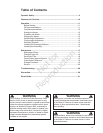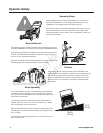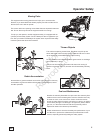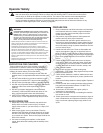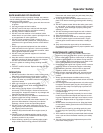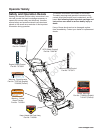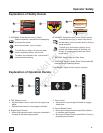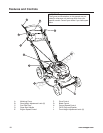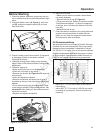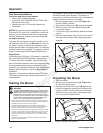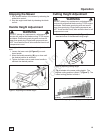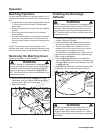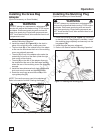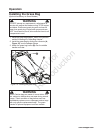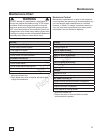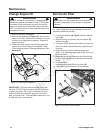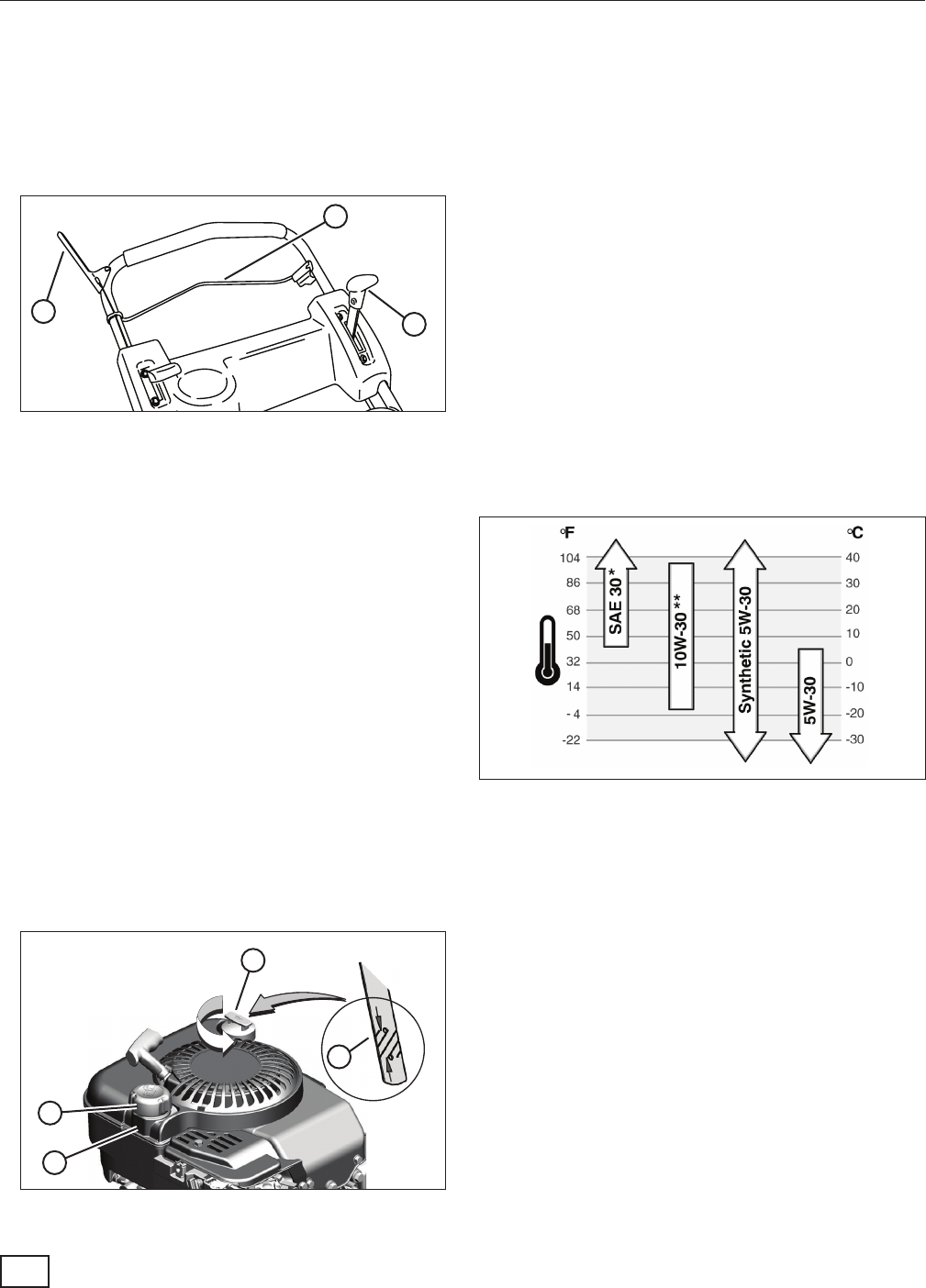
11
Before Starting
1. Check the guards, deflectors, grass bag, and cov-
ers to make sure all are in place and securely tight-
ened.
2. Check the blade control (A, Figure 1), drive con-
trol (B), and ground speed control (C) to insure
they work freely.
Figure 1: Mower controls
B
A
C
3. Check to make sure the drive control (if equipped)
is disengaged. Refer to the section entitled
‘Stopping the Mower’.
4. Check the cutting height. Adjust to the desired
height. Refer to the section entitled ‘Cutting Height
Adjustment’.
5. Check the engine oil:
• Make sure the mower is on a level surface.
• Clean the oil fill area of any debris.
• Remove the dipstick (A, Figure 2) and wipe with
a clean cloth.
• Insert and tighten the dipstick.
• Remove the dipstick and check the oil level. It
should be at the top of the full indicator (B) on the
dipstick.
• If low, add oil slowly into the engine oil fill. Refer
to the section entitled ‘Oil Recommendations’. Do
not overfill. After adding oil, wait one minute and
recheck the oil level.
• Replace and tighten the dipstick.
Figure 2: Oil and fuel fill
A
B
C
D
6. Add fuel to the tank:
• Make sure the mower is outside, where fumes
can safely dissipate.
• Remove the fuel fill cap (C, Figure 2).
• Fill the tank with fuel. Refer to the section entitled
‘Fuel Recommendations’. To allow for expansion
of the fuel, do not fill above the bottom of the filler
neck (D).
• Reinstall the fuel fill cap.
7. Clean the exterior surfaces of the cutting deck and
engine of any accumulation of spilled fuel, dirt,
grass, oil, etc. Keep the engine air intake screen
and cooling fins clear at all times.
Oil Recommendations
We recommend the use of Briggs & Stratton Warranty
Certified oils for best performance. Other high-quality
detergent oils are acceptable if classified for service
SF, SG, SH, SJ or higher. Do not use special additives.
Outdoor temperatures determine the proper oil viscos-
ity for the engine. Use the chart to select the best vis-
cosity for the outdoor temperature range expected.
* Below 40°F (4°C) the use of SAE 30 will result in
hard starting.
** Above 80°F (27°C) the use of 10W-30 may cause
increased oil consumption. Check oil level more
frequently.
Operation
en
Not for
Reproduction



